“Let All That We Imagine Be The Light,” the upcoming album from Garbage, drops May 30. EN/FR
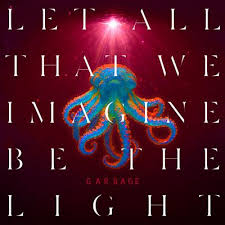
Garbage’s new album
EN
Garbage isn’t just an alternative rock band with distorted guitars, they’re a sonic laboratory, a blend of tension and grace, always driven by Shirley Manson’s electrifying energy. Their sound is an alchemy of rock, electronic, trip-hop, and sometimes even a hint of industrial, all wrapped in a cinematic aesthetic.
Their new album, Let All That We Imagine Be The Light, stays true to this formula. It’s out on May 30, and honestly… it deserves your attention.
FR
Ce n’est pas juste un groupe de rock alternatif à guitares saturées, c’est un laboratoire sonore, un condensé de tension et de grâce, toujours porté par l’énergie électrisante de Shirley Manson. Leur son est une alchimie qui mélange rock, électro, trip-hop, parfois même un soupçon d’indus, le tout enveloppé d’une esthétique cinématographique.
Leur nouvel album, Let All That We Imagine Be The Light, ne déroge pas à la règle. Il sort le 30 mai, et franchement… il vaut qu’on s’y attarde.
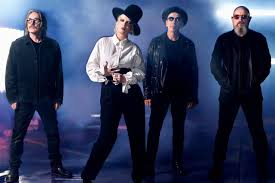
Garbage’s new album
EN
A first impression that hits right away
Within the first 30 seconds of the opening track, I caught myself thinking, “Oh wow, I’m gonna love this.” That kind of instant reaction is rare for me. But here, everything just clicks. Shirley Manson’s voice, unmistakable as ever, fits perfectly into this soundscape that’s equal parts dark, delicate, and luminous.
All ten tracks flow without a single misstep. There wasn’t one I felt like skipping or tuning out. Songs like Radical and Love to Give lean into softness, while others dig deeper, tapping into restrained rage or raw nostalgia.
Where the album really shines is in its textures. The analog synths give off a retro-futuristic, slightly dystopian vibe that suits the mood of the record beautifully. The guitars cut when they need to, but they also know how to wrap you up. And the bass — the bass! — it’s front and center. It grooves, it pulses, it shivers… and so did I.
The band recorded in several places, including Butch Vig’s studio and Shirley’s bedroom, and you can tell. There’s something intimate, something organic that runs through the whole thing.
FR
Une entrée en matière qui accroche dès la première minute
Dès les 30 premières secondes du premier titre, je me suis surpris·e à penser : “Oh ! Wouah, ça va me plaire.” J’ai rarement ce genre de réaction spontanée. Mais ici, tout tombe juste. La voix de Shirley Manson, reconnaissable entre mille, trouve une fois de plus sa place dans cet univers musical à la fois sombre, fragile et lumineux.
Les dix morceaux s’enchaînent sans une seule fausse note. Aucun que j’ai voulu passer, zapper, ignorer. Certains, comme Radical ou Love to Give, jouent la carte de la douceur. D’autres creusent plus profond, dans un genre de rage contenue ou dans une nostalgie brute.
Là où l’album brille aussi, c’est dans ses textures. Les synthés analogiques apportent un côté rétro-futuriste, un peu dystopique, qui colle parfaitement à l’ambiance du disque. Les guitares savent se faire tranchantes mais aussi enveloppantes. Et surtout… la basse. Mise en avant, elle groove, elle vibre, elle frissonne et moi avec.
Le groupe a enregistré dans plusieurs lieux, dont le studio de Butch Vig et la chambre de Shirley. Et ça s’entend : il y a quelque chose d’intime et d’organique.
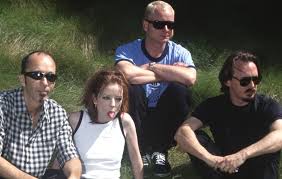
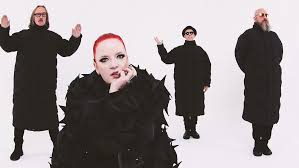
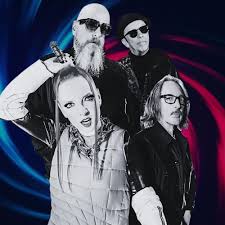
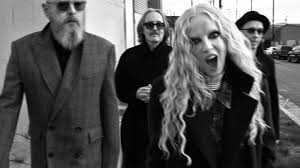
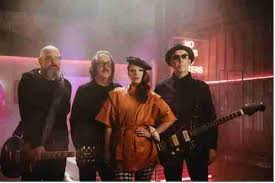
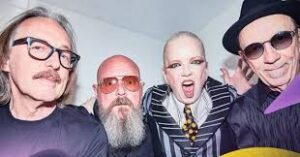
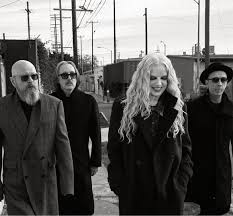
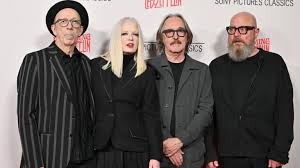
Garbage’s new album
EN
A philosophy turned toward the light
Unlike their previous album (No Gods No Masters), which was more direct and full of rage, Garbage takes a different path here. You can feel Shirley Manson reaching for light after walking through darker places, searching for healing, for renewal. The album’s title is a statement in itself: Let All That We Imagine Be The Light, a kind of sonic utopia. And it works. The record manages to carry a sense of hope without slipping into anything naïve.
Special mention goes to the closing track, The Day That I Met God, raw, almost fragile. You can hear the unfiltered emotion. Her vocals, recorded in a single take in her bedroom, send chills down your spine. It’s a song about mortality, love, gratitude. A true gut-punch, in the best way.
FR
Une philosophie tournée vers la lumière
Contrairement à leur précédent disque (No Gods No Masters), plus frontal et rageur, ici Garbage propose une autre voie. On sent que Shirley Manson, après avoir traversé des zones sombres, cherche la lumière, la reconstruction. Le titre de l’album en est une déclaration : Let All That We Imagine Be The Light – une sorte d’utopie sonore. Et ça fonctionne. Le disque réussit à transmettre une forme d’espoir sans tomber dans la naïveté.
Mention spéciale au morceau final, The Day That I Met God : poignant, presque fragile. On sent l’émotion brute. La voix, enregistrée en une seule prise dans sa chambre, donne des frissons. C’est un morceau sur la mortalité, l’amour, la gratitude. Une vraie claque.
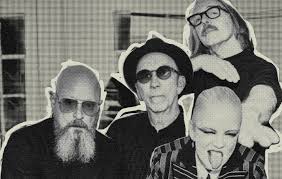
Garbage’s new album
EN
My personal take
I listened to this album in one go, fully absorbed. Garbage proves that even after three decades, they’ve lost none of their spark. On the contrary: this is a record that’s introspective, powerful, and fully alive. It’s the kind of album that makes you feel good, one you want to keep close.
FR
Mon avis perso
J’ai écouté cet album d’une traite, sans jamais décrocher. Garbage prouve qu’après trois décennies, ils n’ont rien perdu de leur flamme. Au contraire : ils nous offrent ici un disque à la fois introspectif, puissant, et résolument vivant. Un album qui fait du bien et qu’on a envie de garder près de soi
Explore our latest music reviews!
Découvrez nos dernières chroniques musicales !


